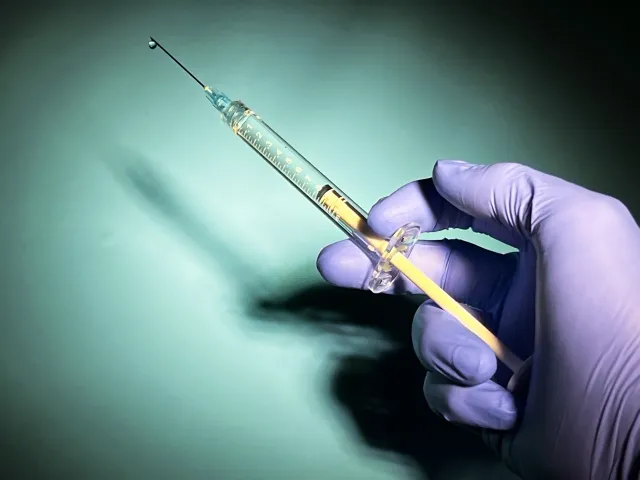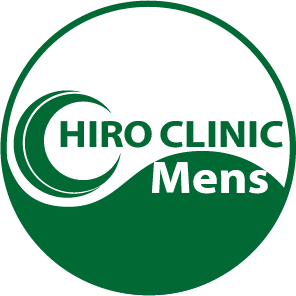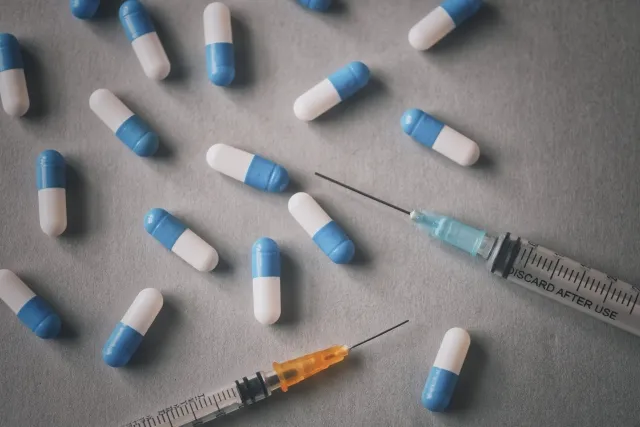この記事の概要
One treatment for ED (erectile dysfunction) is called “penile corpus cavernosum injection”. This method involves injecting an erection-promoting drug directly into the corpus cavernosum of the penis to achieve an erection. It is described in more detail below.
1. What is penile corpus Cavernosum injection?
Intracavernosal Injection (ICI) is a treatment in which a vasodilator is injected directly into the corpus cavernosum of the penis to induce an erection. The injected drug dilates blood vessels and increases blood flow to the penis, allowing for an erection regardless of neurological or psychological factors.
Drugs to be used
Drugs commonly used in this treatment include the following
- Prostaglandin E1 (PGE1, Alprostadil): the most common drug that causes an erection by dilating blood vessels in the penis and stimulating blood flow.
- Papaverine: dilates blood vessels and increases blood flow to the corpora cavernosa of the penis.
- Phentolamine: sometimes used to relieve vascular tension and stimulate blood flow.
These drugs may be used alone or in combination, and the physician will adjust the prescription for optimal effectiveness.
3. effects
Penile corpus cavernosum injections produce an erection 10 to 20 minutes after injection, and the effect lasts approximately 1 to 2 hours. This treatment is particularly effective when other treatments (e.g., ED medications) are ineffective or cannot be used due to side effects. It is also effective when psychological factors are causing ED because it physically induces an erection.
4. Advantages
- Immediate effect: Erection occurs within a short period of time after injection, and the effect is immediate.
- High success rate: Because the drug acts directly on the patient, it has a high success rate, even when other treatments are ineffective.
- Controllability: The ability to control the timing of erections allows for planned sexual activity.

5. side effects and risks
Penile corpus cavernosum injections also carry side effects and risks. Common side effects include the following
- Pain or discomfort: Pain may be felt at the injection site, but is usually mild.
- Sustained erections (priapism): erections may last longer than 4 hours, a condition that requires emergency treatment. It is a rare occurrence and requires early attention.
- Scarring: Frequent injections over a long period of time can cause scar tissue to form and harden in the penis.
- Bleeding and infection: There is a risk of minor bleeding from the injection site and infection, but the risk is low if done properly.
6. treatment procedures
Treatment is usually initiated by a specialist, with the first few injections administered by a physician, after which the patient learns how to safely administer the injections at home on their own. The following procedures must be followed when injecting
- Self-injection instruction: The physician will instruct the patient on the correct method of injection so that self-injection can be performed safely.
- Thorough disinfection: It is important to keep the injection site clean before injection, and proper disinfection is necessary to minimize the risk of infection.
- Proper dosage use: Strictly adhere to the dosage of medications prescribed by your physician and avoid overdose.
7. who is suitable for this treatment
Penile corpus cavernosum injections are an effective treatment for patients for whom ED medications have not been effective or for whom the side effects of the medications are too strong to use. This treatment may also be the treatment of choice for patients who cannot use oral medications due to heart disease or high blood pressure.
summary
Penile corpus cavernosum injections are a very effective treatment option for those who are unable to use medications when ED medications do not work or due to certain health conditions. It is fast-acting and has a high success rate, providing satisfactory results for many patients. However, because of the risks involved, such as persistent erectile dysfunction, proper management and adherence to a physician’s guidance are necessary when self-injecting.










